Here's What You Missed – Achieving Mutual Benefit Through Corporate Philanthropy
 Luncheon speaker advises listen first, negotiate second
Luncheon speaker advises listen first, negotiate second
September Educational Luncheon:
Nationally, individual giving fell last year while corporate philanthropy was up 5.4 percent, according to Giving USA. That made AFP’s September 26 educational luncheon a particularly timely one. Consultant Joanne Ray’s insightful “Strategies for Mutually Beneficial Corporate Partnerships” set pens flying as the crowd of 80 attendees scribbled valuable notes.
Joanne Ray, now a principal with the consulting firm Consultants in Association Philanthropy, shared the wealth of experience she’s amassed as a staff member building corporate relationships for a wide range of mainly health care-oriented associations.
She recommended that those seeking corporate gifts start with the right mindset. Unlike individual donors who may be guided solely by their passions, corporations are enterprises that are accountable to certain business and corporate responsibility goals. “Get to the point where you can explain the unique ways your organization can help them achieve those goals,” encouraged Joanne, “and your chances of support skyrocket.”
Finding corporate prospects comes first. Joanne’s advice: Do some research to find companies who have already evidenced interest in your cause. Then map a pathway to them, using your organization’s existing friends as door openers. “Look at your individual donors who work at your target companies, or at the connections your board members might have to those companies,” said Joanne. “The key is to find someone who already believes in you who can help you get access to the company’s decision makers.”
Then it’s vital to think about what the company might have to gain from the relationship you will offer them. “You need to spend time probing their needs. Ask about the payoffs they value from other nonprofit relationships, and explain how you can deliver in similar ways,” said Joanne. “As with any relationship you try to build, it’s important to talk more about your partner than yourself.”
Corporations commonly want to gain greater awareness among their targeted audiences, so before you enter a conversation be sure you know how your constituencies and theirs overlap, said Joanne. “Know the social demographics of those who have an affinity for your organization, and the reach of your own marketing in reaching them,” said Joanne. “That exposure can make what your offering very tangible. The key is to show how you can bring them unique value. This is a business proposition, after all.”
Joanne stressed that nonprofits should avoid one common mistake in approaching a corporation. “Definitely go in with a menu of benefit types and levels you can offer a prospect, but use that only as a starting point for a conversation about what a meaningful relationship would look like to the company. Too many organizations get stuck on the menu, and one size does not fit all,” said Joanne. “In addition to visibility, your prospect might want a degree of access to your leadership or to industry thought-leaders, or they may want your organization’s partnership in a project of mutual interest. These can all be part of the final agreement.”
Likewise, be flexible and creative about how the target company could bring value to your organization. Said Joanne, “In addition to cash, you might benefit from tapping their management expertise, or from exposure through their communications, or by receiving tangible benefits like donated equipment, free printing, etc.”
In negotiating each unique corporate relationship, you need to understand upfront what you can and can’t offer. “Have definite gift acceptance policies and be clear about matters of principle you don’t want to compromise. Also, avoid pandering or having unsustainable demands placed on your program people by any corporate relationship – that won’t win you points on either side.” Articulate clearly the roles and responsibilities of both partners in the relationship, Joanne said.
Nonprofits should strive to make it as easy as possible for their internal company contact to take your request to the next level of decision-makers. “Show how the partnership will provide a return on investment in terms they value. Submit a strong, tailored proposal that describes your organization, its strategic plan, numbers that show its reach and mission impact, and visuals and stories that bring that impact to life. If you might make multiple asks of the same corporation over time, create a unified solicitation; ‘serial solicitations’ are confusing and harder to sell.”
“Corporate donors have different objectives than individual donors,” Joanne concluded, “But that should not present a problem for an organization than is truly donor-centric. Work with each company to achieve a partnership that benefits both sides.”
Have an idea for future professional development opportunities? Contact Julie Cordero from the AFPSEWI Education Committee at wilder.julie@gmail.com.
